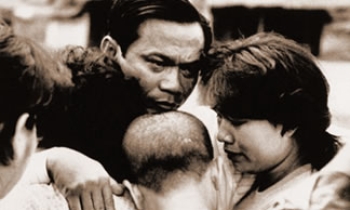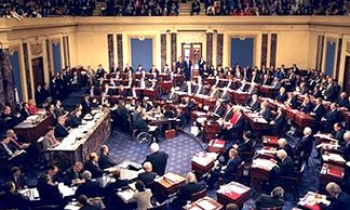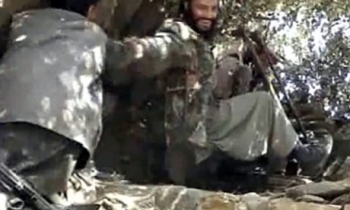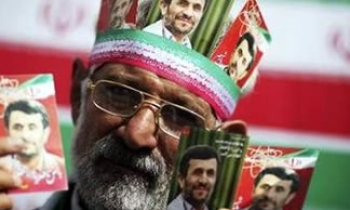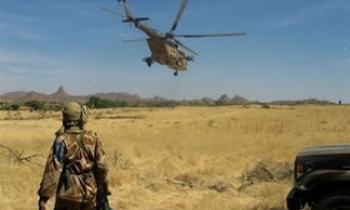As opposed to parachute or embedded journalism where there is the solace of jetting out or the sinking into the confines of a green zone, the Kashmiri journalists as inhabitants of the region have to work not only as scribes but also live as the daily victims of the conflict.
In a recent incident unidentified gunmen in civvies (probably belonging to the Special Operation group of the security forces), abducted and beat up a journalist, named Naseer Khora from district Doda in Kashmir.
The gunmen not only assaulted Khora, they also shaved off one side of his beard adding to his deep humiliation.
Such incidents are not new for scribes in the valley (or for that matter other parts of world where there is a lawless abuse of human rights).
In spate of many such abuses, Indians security services have in the past couple of years been implicated in attacks for assaulting three reporters and also arresting another journalist and his wife. One, photojournalist, Muhammad Maqbool Khokar has been held since September 2004, under an emergency public security law. The police refuse to release him despite protests.
There are also some issues pertaining to alleged threats to journalists from Kashmiri separatists in certain cases.
The recent incident with Naseer Khora, brings up fresh questions about journalists and their rights and duties in situations like Kashmir.
Naseer has been accused of being a human rights activist and being allied to such organizations. Naseer had been attending a two-day meeting of human rights activists from northeastern parts of India, where there are ongoing anti-India movements as well. The aim of the meeting was to form an Asia-wide collaboration to ensure protection of human rights activists, share information, and respond to threats to human rights defenders at the individual and collective levels.
The alliance would report human rights violations, take up fact-finding missions, and make joint protests.
Such a prospective organization in any other part of the world that prizes human freedom would be seen as an endearing effort, but for Kashmir, where the mere mention of being for “human rights” is seen as a threat.
The point here is not as much, how Naseer Khora was treated as a journalist, but in such a tumultuous situation and in light of the professional journalistic code of ethics, how are journalists expected to behave and form affiliations. Does the mere fact of being a professional erode ones belief for propagating human rights? Even when truly objective and staying within the expected nature of coverage, does ethnicity, relations and affiliations still hinder a journalist’s work.
In a scenario of ghastly human rights abuses, which need to be documented and aired by the journalists; questions arise regarding objectivity. Can we expect an objective coverage and stand for truth; yet restrain the journalists from contributing to the human rights values they believe in; as is being done in Khora’s case.
Does a journalist’s interest in human rights make his role any less objective or less valuable; can native journalists have the luxury of being impervious to what is happening around them. Can their role be encompassed in the usual ethics code to describe their objectivity due to the deeply personal nature of their experiences?
The intimate nature of their involvement in the conflict adds another dimension to the journalists work, as was seen in the case of Iftikhar Geelani. Geelani, a journalist was charged under the Indian Official Secrets Act, a constraining law that stands a testimony to the legacy left by the British colonial rule. The tax department officers and police arrested Iftikhar, at his New Delhi residence in 2002. He was accused of storing information about India 's military presence in Kashmir and possessing classified documents "prejudicial to the safety and security of the country," in his laptop computer.
Iftikhar Geelani claimed that the material came from a 1997 United States State Department report and had previously been published in the Indian daily "The Hindu" (RSF, 2004). Reports followed that Geelani had admitted that he worked for Pakistani intelligence.
However authorities finally released Geelani, when the documents cited by investigators as central to the case had been published in a Pakistani journal and were readily available on the Internet. All the charges were admitted as unsubstantiated.
As the Geelani saga continued and even after his release due to unsubstantiated charges, there were speculations about his predicament, if it was brought forth or exacerbated by the fact, that he was the son-in-law of a pro-Pakistan separatist Kashmiri leader Syed Ali Shah Geelani, who had also been charged under an anti-terrorist law and accused of working for Pakistani intelligence. In addition, Geelani was working for a Pakistani paper.
There a big trend in conflict zones such as Kashmir, where indigenous journalists not only report but also many times double as activists for certain causes. Biggest example is manifested in Asiya Jeelani, who as a budding journalist left the cozy confines of a secure job to edit a magazine for a human rights group. She was later killed in a mine blast while her colleague Khurram Parvez, journalist turned award-winning activist lost his leg. Such examples are replete in the valley.
In such a charged and unpredictable scenario, the might of journalism is not only tested in how far it reports the truth but how much truth can be tolerated. Therein, it reshapes and redefines what a journalist can accomplish while reporting the events.

